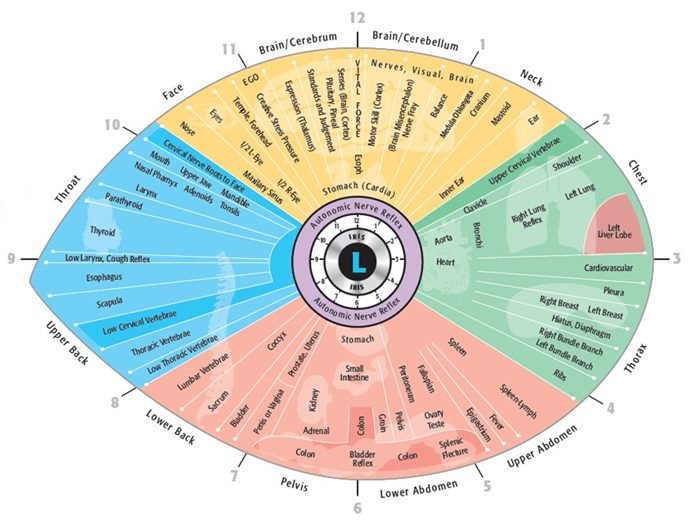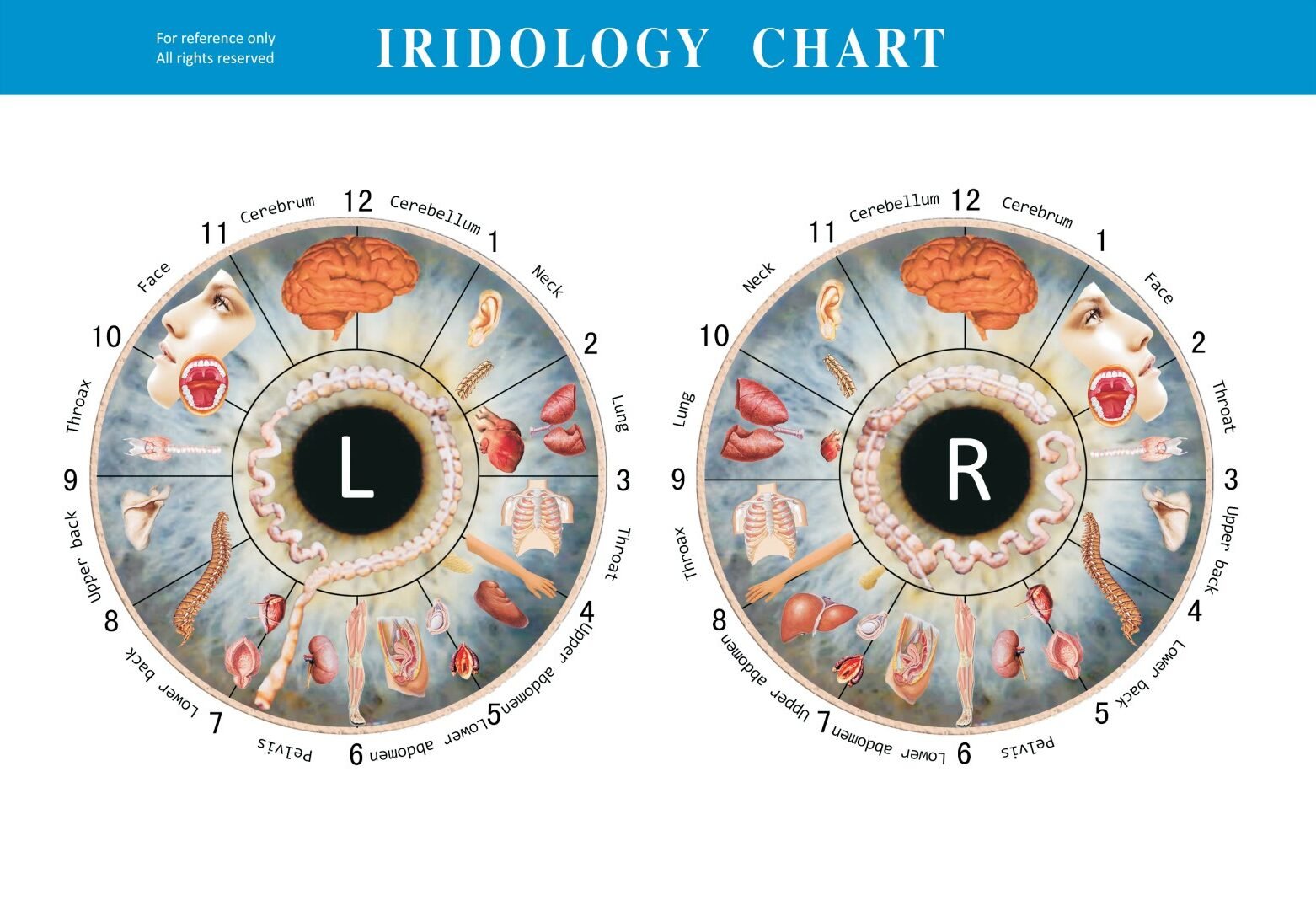Maikong-Professional Iridology Camera Camera Iriscope Производитель и поставщик
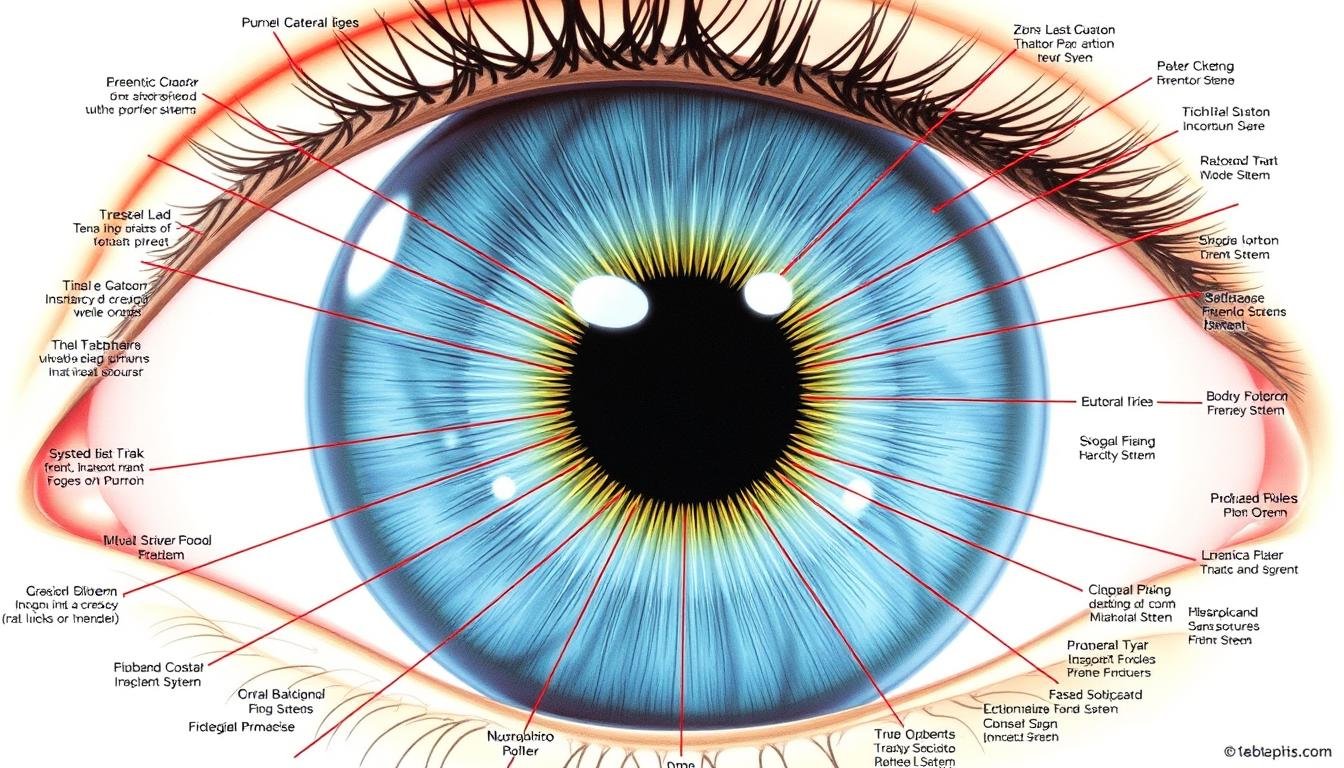
What is an Iridology Map?
Ан иридологическая карта serves as a reference guide that divides the iris into multiple zones, each corresponding to different organs and systems within the body. Practitioners use these maps to identify markings, discolorations, and patterns that may indicate health imbalances or potential concerns in specific areas of the body.
The concept behind iridology is that the iris connects to every organ and tissue via the nervous system, with its appearance reflecting the condition of these body parts. When an organ experiences stress or damage, corresponding changes may appear in the iris, which iridologists interpret using specialized charts.
Historical Origins of Iridology Maps
While some historical records suggest that forms of iris analysis existed in ancient Egypt, China, and India over 3,000 years ago, modern iridology is often credited to Hungarian physician Ignatz von Peczely. In the 1860s, as a child, von Peczely noticed changes in an owl’s iris after it suffered a broken leg. This observation sparked his interest in the connection between iris markings and physical conditions.
In 1880, von Peczely published the first modern iridology chart, mapping the iris to various organs and body systems. Swedish homeopath Nils Liljequist independently developed similar concepts around the same time. By the early 20th century, iridology gained popularity in Europe and later spread to North America, where various practitioners refined and expanded the mapping systems.
Discover Your Personal Iris Pattern
Curious about what your iris reveals? Our certified iridologists can provide a personalized analysis using professional-grade iridology maps.
How Iridology Maps Divide the Iris into Zones
Iridology charts typically divide the iris into approximately 80-90 zones, resembling a clock face. Each zone corresponds to specific organs, glands, and body systems. The right iris generally reflects the right side of the body, while the left iris corresponds to the left side.
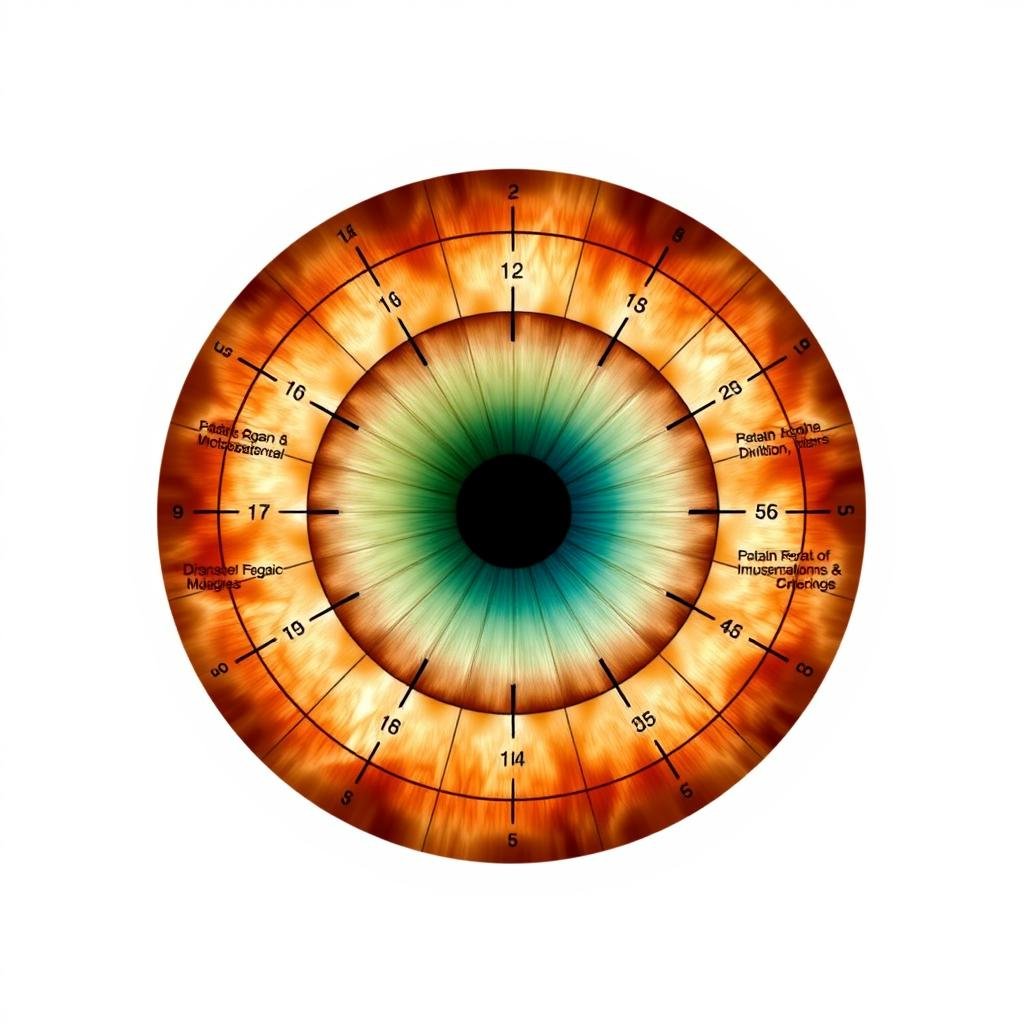
Key Zones of the Iridology Map
Right Iris Zones
- Top Region (12 o’clock): Brain, head, and sinuses
- Upper Right (1-3 o’clock): Lungs, bronchi, and throat
- Right Side (3 o’clock): Liver and gallbladder
- Lower Right (4-6 o’clock): Appendix, ascending colon, and right leg
- Bottom (6 o’clock): Reproductive and elimination systems
Left Iris Zones
- Top Region (12 o’clock): Brain, cerebral circulation
- Upper Left (9-11 o’clock): Heart and left lung
- Left Side (9 o’clock): Stomach and spleen
- Lower Left (6-8 o’clock): Descending colon and left leg
- Bottom (6 o’clock): Reproductive and elimination systems
The iris is also divided into concentric rings, with areas closer to the pupil representing internal organs and digestive systems, while the outer rings correspond to skin, muscles, and extremities. The density, color, and structure of fibers in these zones are analyzed for potential health insights.
To make diagnosis more accurate, иридологическая карта is often use in conjunction with other diagnostic methods.

Диаграмма иридологии правой глаз -иридологической диаграммы -правый глаз
правый глаз отражает правая сторона тело.
| Положение часов (правый глаз) | Соответствует органу/системе | Подробности |
|---|---|---|
| 1 О'КЛОК - 2 О'КЛОК | Правое лицо | Соответствует левым репродуктивным органам, включают матку, яичники (женщины) или яички (мужчина). |
| 2 часа - 3 часа | Правое горло |
Здоровье RingFlects Left Sailts, включают в себя колени, бедра, локти и плечи. |
| 3 часа - 4 часа | Правая верхняя часть спины |
Соответствует позвоночнику, здоровью позвоночника, выравниванию и гибкости. |
| 4 часа - 5 часов | Правый мочевой пузырь | RingFlects мочевой пузырь и мочевой системы правой стороны. |
| 5 часов - 6 часов | Правый таз | Ringpresents оставили толстую кишку, тонкую кишку и пищеварительное здоровье. |
| 6 часов - 7 часов | Правая нижняя живот |
RingFlects оставил почку, сфокусирована на фильтрации, детоксикации и балансе жидкости. |
| 7 часов - 8 часов | Правый верхний живот |
RingFlects желудок и пищеварительные органы с левой стороны. |
| 8 часов - 9 часов | Правая грудная клетка | Соответствует печени левой стороны, ответственной детоксикации и производства желчи. |
| 9 часов - 10 часов | Правое легкое | Ringpresents Left Side Heart, Antifte сердечно -сосудистое здоровье и кровообращение. |
| 10 часов - 11 часов | Правая шея | RingFlects оставил легкое, респираторное здоровье и функцию BREA. |
| 11 часов - 12 часов | Правый мозг |
Соответствует мозгу мозга левого полушария, психического здоровья и когнитивных функций. |
| 12 часов - 1 часа | Правый мозг |
Соответствует мозгу мозга левого полушария, психического здоровья и когнитивных функций. |
Диаграмма иридологии левый глаз - иридологическая диаграмма - левый глаз
левый глаз отражает левая сторона тело.
| Положение часов (левый глаз) | Соответствует органу/системе | Подробности |
|---|---|---|
| 1 О'КЛОК - 2 О'КЛОК | Левая шея |
Соответствует правым репродуктивным органам, включают матку, яичники (женщины) или яички (мужчина). |
| 2 часа - 3 часа | Левое легкое | RingFlects Health Right Sutts, включают в себя колени, бедра, локти и плечи. |
| 3 часа - 4 часа | Оставил грудь | Соответствует позвоночнику, здоровью позвоночника, выравниванию и гибкости с правой стороны. |
| 4 часа - 5 часов | Левый верхний живот |
RingFlects мочевой пузырь и мочевой системы левой стороны. |
| 5 часов - 6 часов | Оставил нижнюю живот |
Ringpresents Правая толстая кишка, тонкая кишка и пищеварительное здоровье. |
| 6 часов - 7 часов | Левый таз |
RingFlects Правая почка, сфокусируется на фильтрации, детоксикации и балансе жидкости. |
| 7 часов - 8 часов | Влево в нижней части спины |
RingFlects желудок и пищеварительные органы с правой стороны. |
| 8 часов - 9 часов | Левая верхняя часть спины |
Соответствует правой боковой печени, ответственной детоксикации и выработке желчи. |
| 9 часов - 10 часов | Левая горло |
Ringpresents правая сторона сердца, аффективное сердечно -сосудистое здоровье и кровообращение. |
| 10 часов - 11 часов | Левое лицо | RingFlects Правое легкое, дыхательное здоровье и функция BREA. |
| 11 часов - 12 часов | Оставил мозговой | Соответствует мозгу правого полушария, психического здоровья и когнитивных функций. |
| 12 часов - 1 часа | Оставил мозговой | Соответствует мозгу правого полушария, психического здоровья и когнитивных функций. |
- Правый глаз: RingFlects Правая сторона тело (например,, Верно почка, Верно легкое, Верно репродуктивные органы и т. Д.).
- Левый глаз: RingFlects Левая сторона тело (например,, Левый почка, Левый легкое, Левый репродуктивные органы и т. Д.).
Visual Representation of an Iridology Chart
Below is a simplified representation of how an iridology map divides the iris. This diagram illustrates the basic zones and their corresponding body systems:
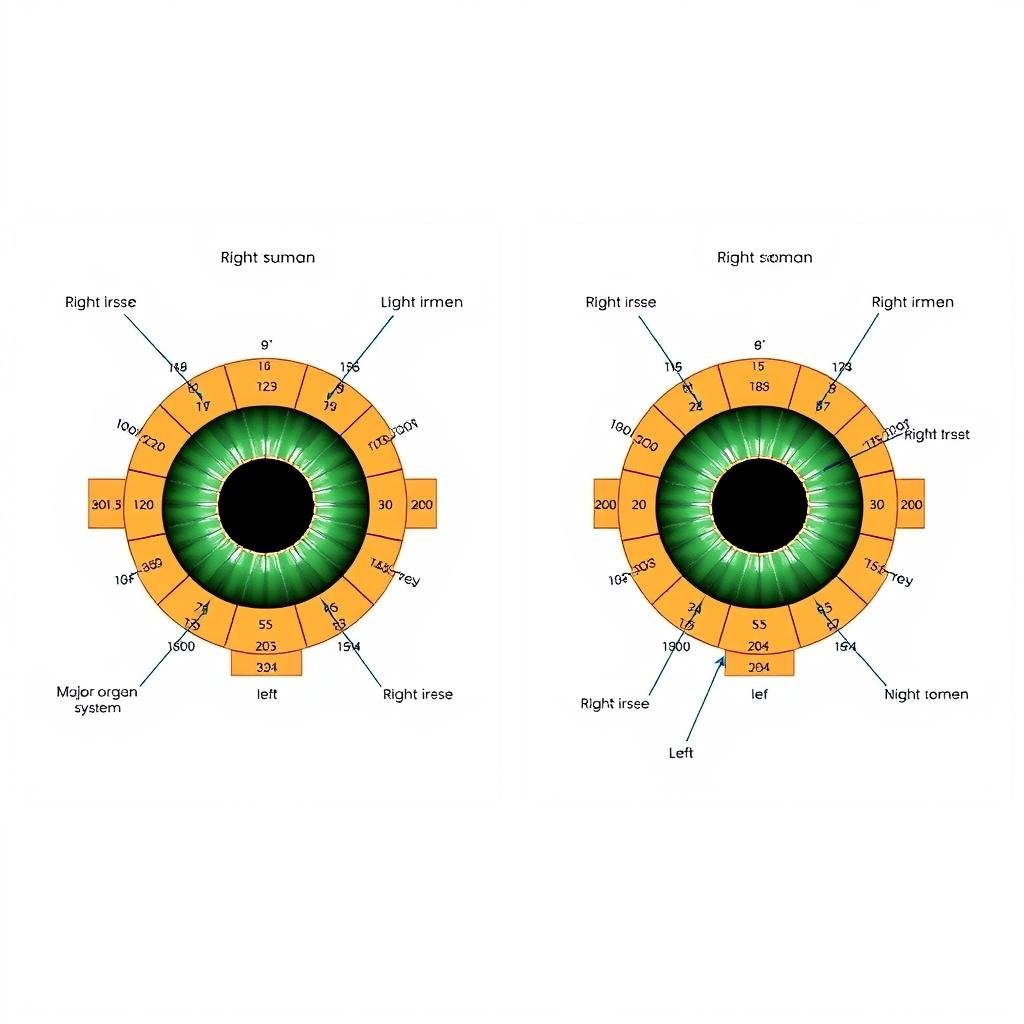
BRAIN (12)
/ \
LUNGS (11) SINUSES (1)
/ \
HEART (10) THROAT (2)
/ \
STOMACH (9) LIVER (3)
/ \
PANCREAS (8) GALLBLADDER (4)
\ /
COLON (7) INTESTINES (5)
\ /
\ BLADDER /
\ (6) /
-----------
This simplified ASCII representation shows how the iris is divided like a clock face, with each position corresponding to different body systems. Professional iridology charts are much more detailed, often including sub-zones and color indicators for various conditions.
Claimed Benefits of Using Iridology Maps for Health Analysis
Proponents of iridology suggest several potential benefits of using iris analysis as part of a holistic health assessment. While scientific validation remains limited, many practitioners and clients report value in the following aspects:
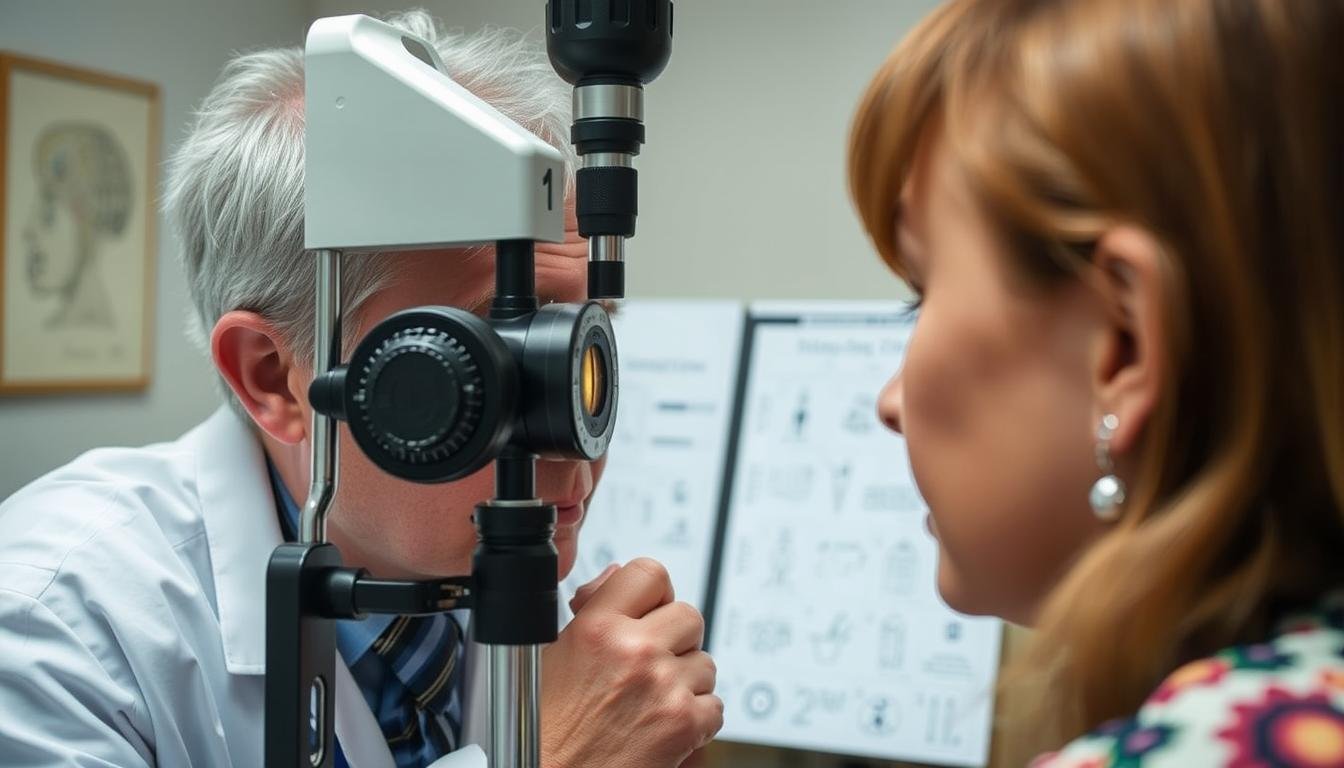
Early Detection of Imbalances
Iridology advocates claim that changes in the iris may appear before physical symptoms develop, potentially allowing for preventative measures before conditions worsen. The iris may show signs of inflammation, toxin accumulation, or organ stress that haven’t yet manifested as noticeable symptoms.
Целостная оценка здоровья
Unlike tests that focus on specific conditions, iridology maps provide a comprehensive overview of the entire body. This holistic approach may help identify patterns and connections between different systems, potentially revealing how issues in one area affect others.
Non-Invasive Screening
Iridology is completely non-invasive, requiring only visual examination of the iris. There’s no discomfort, no exposure to radiation, and no need for blood draws or tissue samples, making it an appealing complementary assessment for those seeking gentle health screening options.
Download Our Free Iridology Guide
Get our comprehensive beginner’s guide to understanding iridology maps and what they might reveal about your health.
Scientific Criticisms and Limitations of Iridology
Despite its popularity in alternative health circles, iridology faces significant criticism from the scientific and medical communities. Understanding these limitations is essential for making informed decisions about its use:
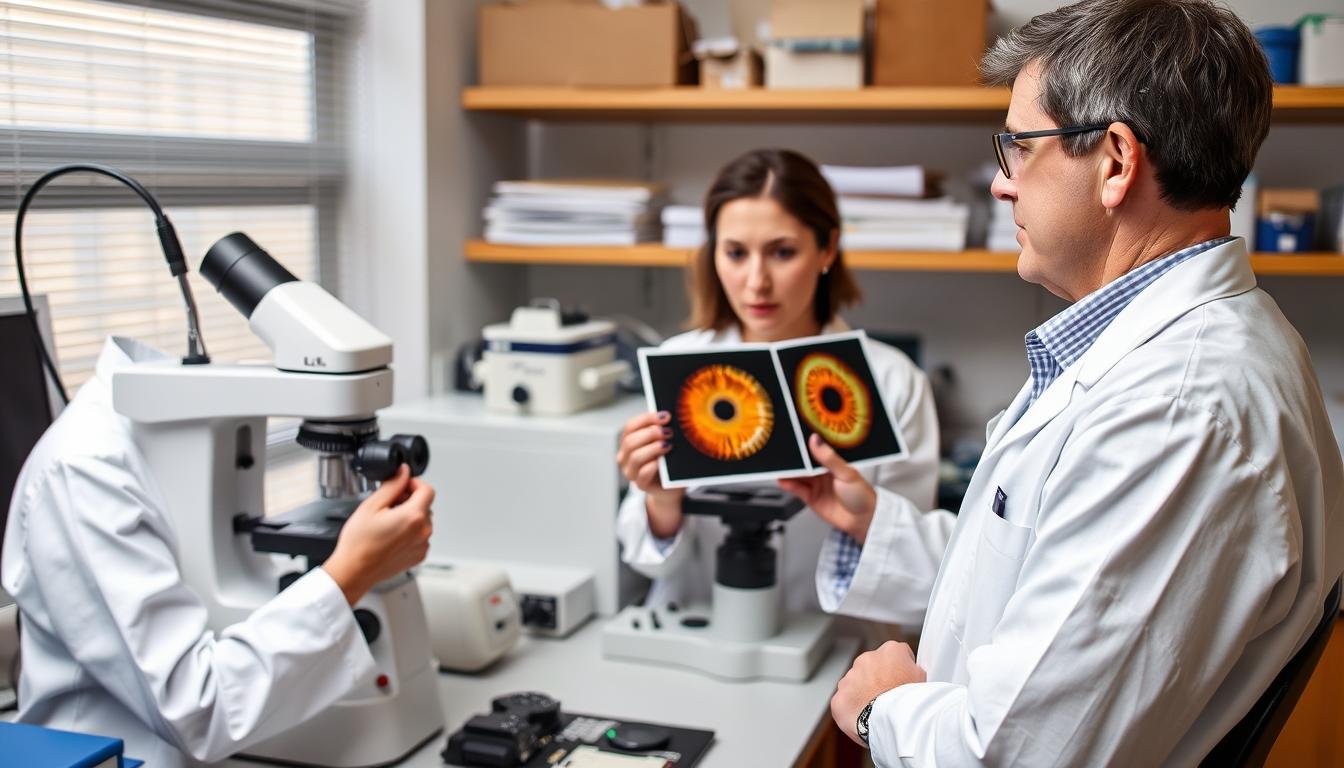
Potential Strengths
- Non-invasive assessment technique
- Может способствовать повышению осведомленности о профилактическом здоровье
- Can complement other health assessments
- Promotes holistic view of health connections
Scientific Limitations
- Lack of controlled scientific studies validating claims
- No standardized iridology maps across practitioners
- Double-blind studies have failed to show diagnostic accuracy
- No established physiological mechanism for iris-organ connections
- Risk of missing serious conditions or delaying proper treatment
Several controlled studies have tested iridologists’ ability to detect specific conditions through iris analysis. A notable study published in the Journal of the American Medical Association found that iridologists could not consistently identify patients with kidney disease from their irises. Similar studies have shown that iridology readings often don’t correlate with confirmed medical diagnoses.
The medical community generally considers iridology to lack scientific validity as a diagnostic tool. However, some practitioners view it as a complementary assessment that may provide insights when used alongside conventional medical care, rather than as a replacement.
Step-by-Step Instructions for Basic Self-Analysis Using an Iridology Map
While professional iridology typically requires trained practitioners, you can perform a basic self-examination to familiarize yourself with your iris patterns. Remember that this is for educational purposes only and should not replace proper medical care.

- Gather Your MaterialsYou’ll need a small flashlight, a magnifying mirror (5x to 10x magnification works best), good lighting, and a basic iridology chart for reference. Digital cameras with macro settings can also be helpful for capturing detailed iris images.
- Create Proper LightingPosition yourself in a well-lit area, preferably with natural light. Avoid direct sunlight as it may cause your pupils to constrict too much. If using artificial light, position it at a 45-degree angle to your eye to minimize reflections.
- Examine Your Iris ColorNote your basic iris color (blue, brown, green, or mixed). According to iridology, different base colors may indicate different constitutional types and tendencies. Blue eyes typically show markings more clearly, while brown eyes may require more careful observation.
- Look for Major MarkingsObserve any prominent features such as dark spots, white lines, rings around the pupil or iris edge, and color variations. Compare these to an iridology chart to identify which body systems they might correspond to.
- Document Your ObservationsTake clear photos or make detailed notes about what you observe. This creates a baseline for future comparisons and helps track any changes that might occur over time.
Важный: Self-analysis should be considered educational rather than diagnostic. If you notice concerning health symptoms, always consult with a qualified healthcare provider rather than relying solely on iridology interpretations.
Get Professional Iris Analysis
For accurate interpretation of your iris patterns, consult with our certified iridology practitioners who use professional-grade equipment and comprehensive iridology maps.
Understanding Iris Colors and Patterns in Iridology
Iridology interprets not just the zones of the iris but also its colors, textures, and specific markings. These features are believed to provide additional insights into constitutional tendencies and potential health conditions.
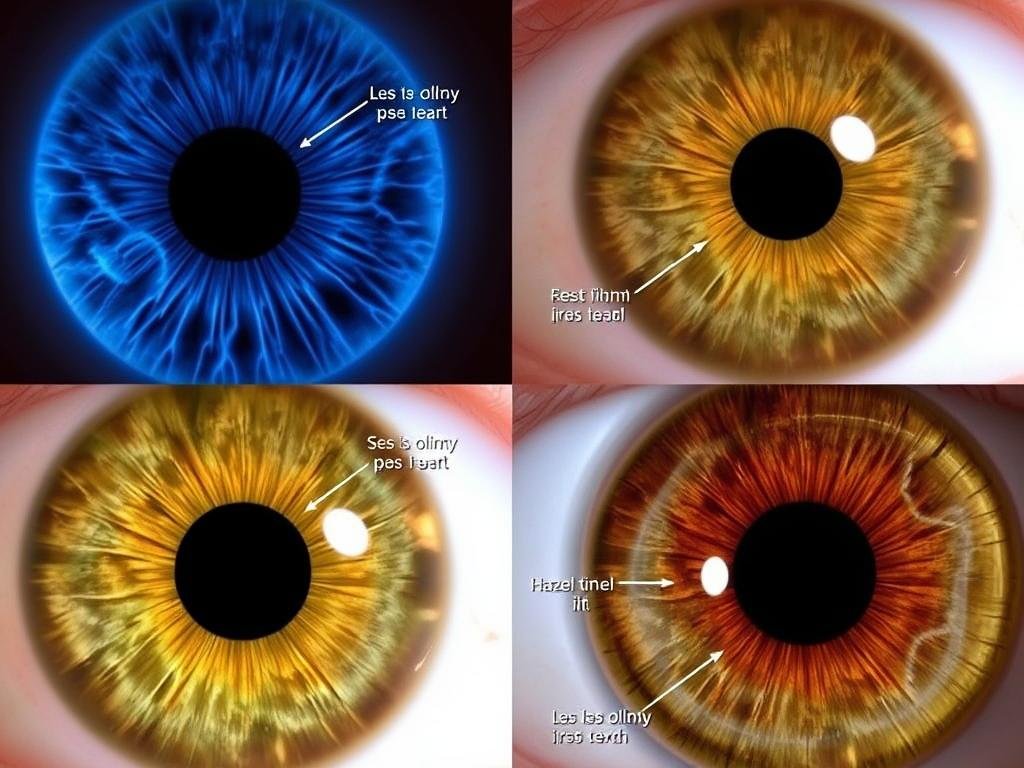
Common Iris Colors and Their Interpretations
| Радужная оболочка | Constitutional Type | Traditional Interpretation |
| Blue | лимфатический | May indicate sensitivity to respiratory and lymphatic issues; often associated with European ancestry |
| Коричневый | Гематогенный | Associated with stronger digestive system but potential for liver and blood-related conditions |
| Mixed/Hazel | желчный | May indicate mixed constitutional strengths and weaknesses; often associated with digestive and liver sensitivity |
| Green | Смешанный | Combination of lymphatic and hematogenic types; may indicate balanced constitution with mixed tendencies |
Significant Iris Markings and Their Meanings
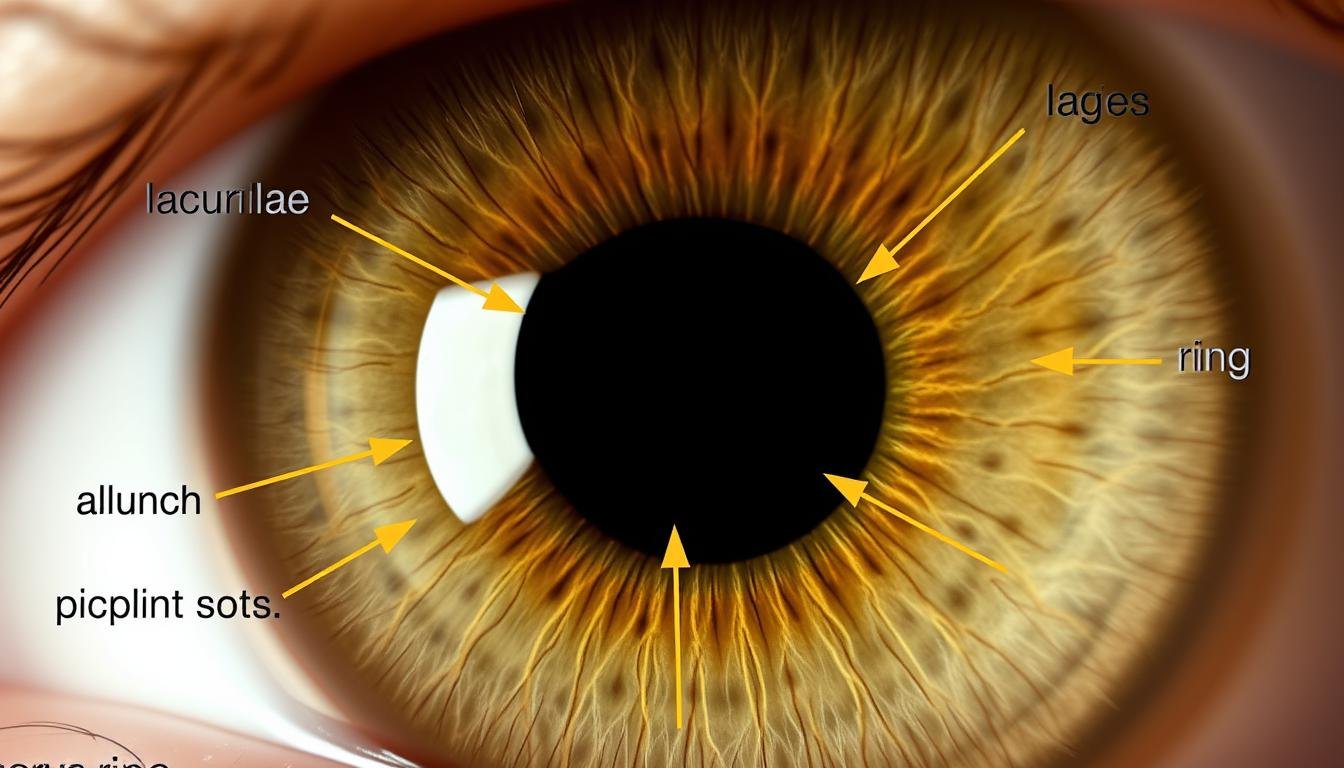
- Lacunae (Closed Lesions): Enclosed darkened areas that may indicate inherent weaknesses or genetic predispositions in specific organs
- Radii Solaris (Spokes): Lines radiating from the pupil that may suggest inflammation or irritation in corresponding organs
- Pigment Spots: Dark spots that might indicate toxin accumulation or areas of concern
- Nerve Rings: Circular lines around the iris that may reflect stress, nervous tension, or adrenal fatigue
- Lymphatic Rosary: White dots forming a ring around the outer iris that might indicate lymphatic system congestion
Frequently Asked Questions About Iridology Maps
Here are answers to some common questions about iridology maps and their application in health assessment:
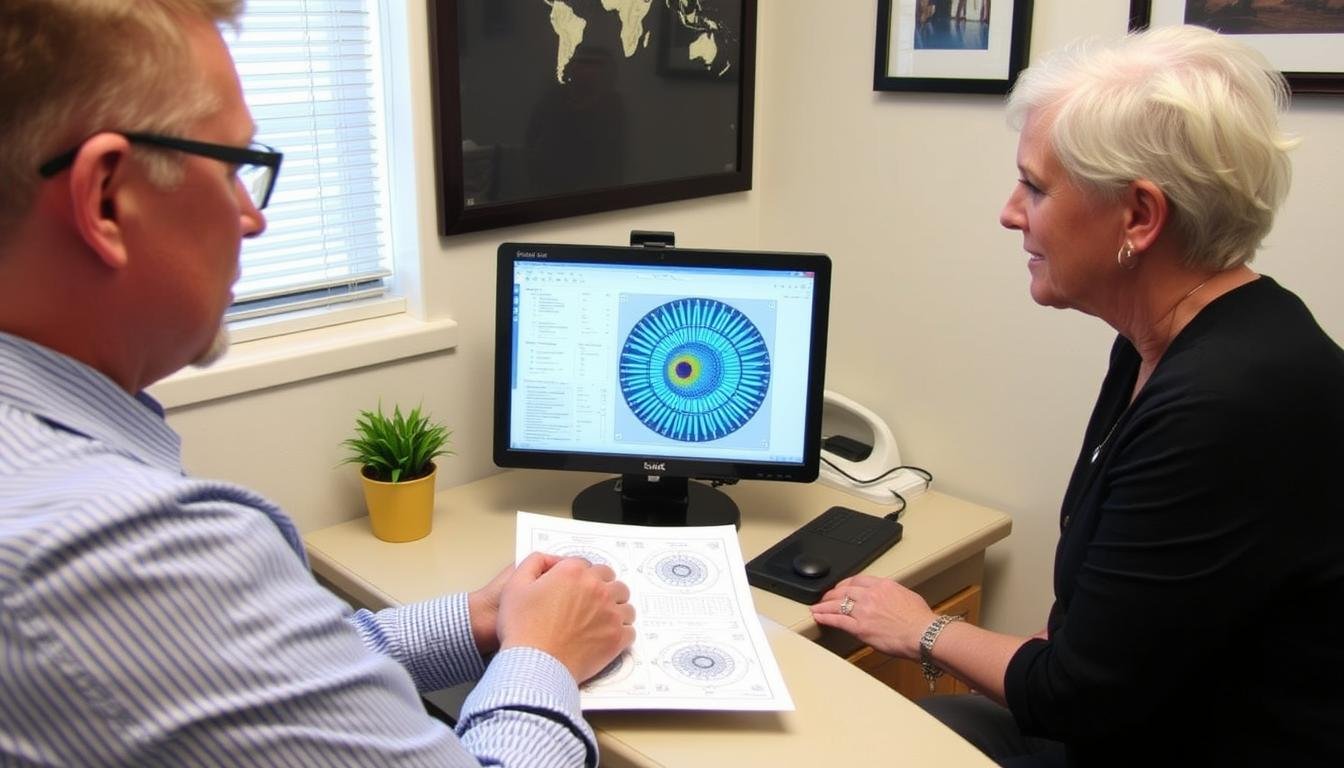
Can iridology maps diagnose diseases?
No, iridology maps cannot diagnose specific diseases. Iridology is considered a complementary assessment tool that may identify areas of weakness or stress in the body, but it cannot definitively diagnose medical conditions. Practitioners typically describe what they observe as “tendencies” или “predispositions” rather than diagnoses. Any concerning findings should be followed up with appropriate medical testing and evaluation by healthcare professionals.
Насколько точны диаграммы иридологии?
The accuracy of iridology charts is a subject of debate. Scientific studies have generally not supported claims of diagnostic accuracy. Several controlled studies have shown that iridologists cannot consistently identify people with known medical conditions based on iris examination. However, proponents argue that iridology is not meant to diagnose specific diseases but rather to identify constitutional strengths and weaknesses. The lack of standardization among iridology charts and interpretation methods also affects consistency and reliability.
What do different iris colors and patterns indicate?
In iridology, different iris colors are associated with different constitutional types and potential health tendencies. Blue irises are often linked to lymphatic constitutions, brown to hematogenic (blood-related) types, and mixed colors to biliary types. Specific markings like spots, rings, and lines are interpreted as indicators of potential organ stress, inflammation, or inherent weaknesses. The location of these markings on the iridology map determines which body systems they might affect. However, these interpretations vary between different schools of iridology.
Do iris patterns change over time?
There are differing views on whether iris patterns change significantly over time. Some iridologists believe that the basic structure and constitutional markings remain relatively stable throughout life, while others suggest that certain features can change to reflect developing health conditions. Most practitioners agree that acute conditions may cause temporary changes in iris appearance, such as changes in color brightness or clarity, while the fundamental structure remains consistent. Regular documentation of iris appearance can help track any potential changes.
Есть еще вопросы об иридологии?
Our experts are available to answer your questions about iridology maps and how they might benefit your holistic health journey.
Conclusion: The Place of Iridology Maps in Holistic Health
Iridology maps offer a fascinating perspective on the potential connections between iris patterns and overall health. While scientific validation remains limited, many find value in this holistic approach as a complementary tool for health awareness. The practice encourages individuals to take an active interest in their wellbeing and may highlight areas deserving attention.
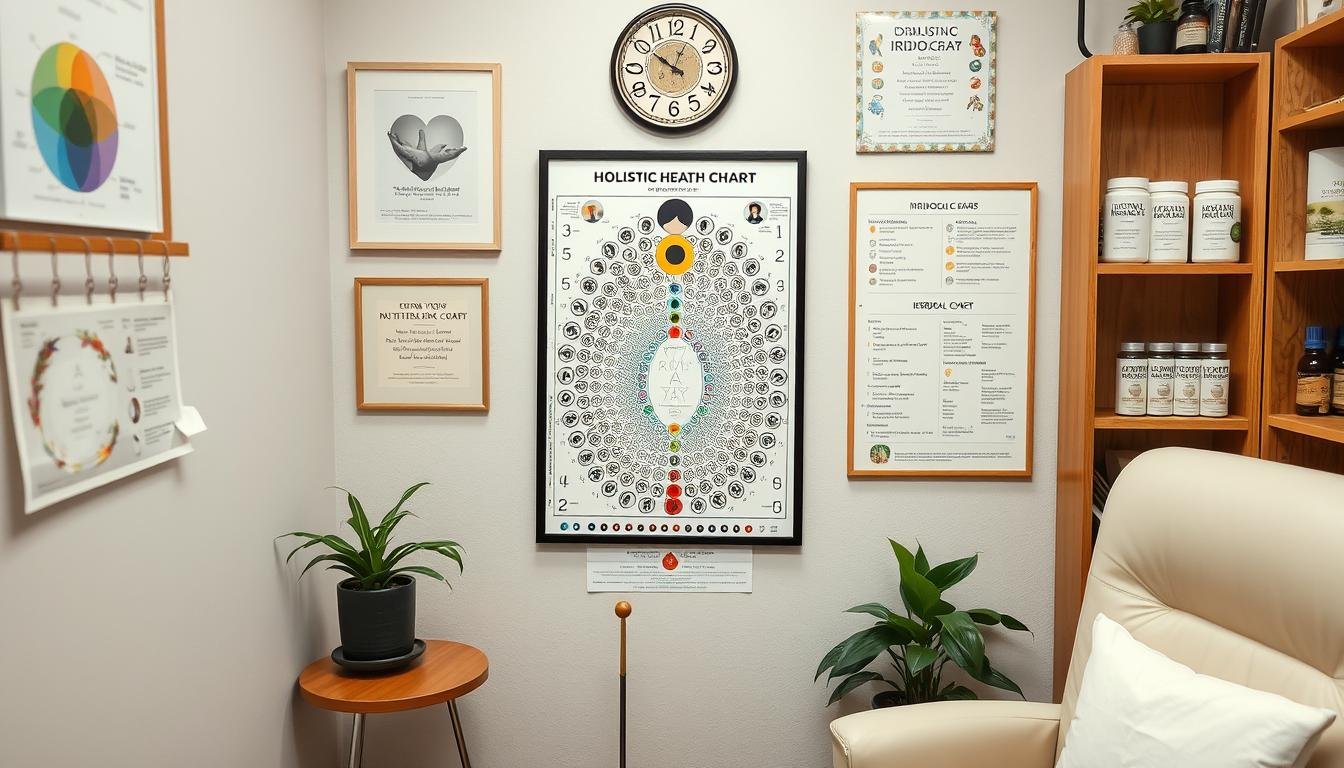
When approaching iridology, balance is key. Consider it as one piece of a larger health puzzle rather than a standalone diagnostic method. Always combine iris analysis with conventional medical care, especially for serious health concerns. The most responsible use of iridology maps is as a tool for health awareness that complements, rather than replaces, evidence-based healthcare.
Whether you’re a skeptic or an enthusiast, exploring the world of iridology maps can deepen your appreciation for the complexity of the human body and the many ways we seek to understand it. As with any health approach, informed decision-making and open communication with healthcare providers remain essential.
Begin Your Iridology Journey
Ready to explore what your iris might reveal about your health? Schedule a consultation with our certified iridology practitioners.
Request More Information About Iridology
Interested in learning more about iridology maps and how they might benefit your health journey? Fill out the form below, and our specialists will contact you with more information.














